Degree of fixity of retaining walls
Table of contents
1. Degree of fixity of retaining walls
1.1 Retaining walls
Retaining walls are required as retaining walls for the temporary securing of excavation pit walls. They are also used for permanent use, e.g. in harbor constructions as a landing place, as a bank wall, as an abutment of bridge superstructures or as a seal installed in a dam.
Due to the wide range of possible combinations of retaining wall types - sheet pile wall, soldier pile wall, diaphragm wall, bored pile wall - properties such as water impermeability and required moments of resistance can be adjusted to the respective requirements.
Retaining walls are used in dry soils and in soils in groundwater. They are even used in flowing water, e.g. in the construction phase of the foundation of river piers of a bridge structure.
Do you want to get started directly with the design of retaining walls? Just one "mouse click" will take you to the license variants of the software solution: GGU-RETAIN.
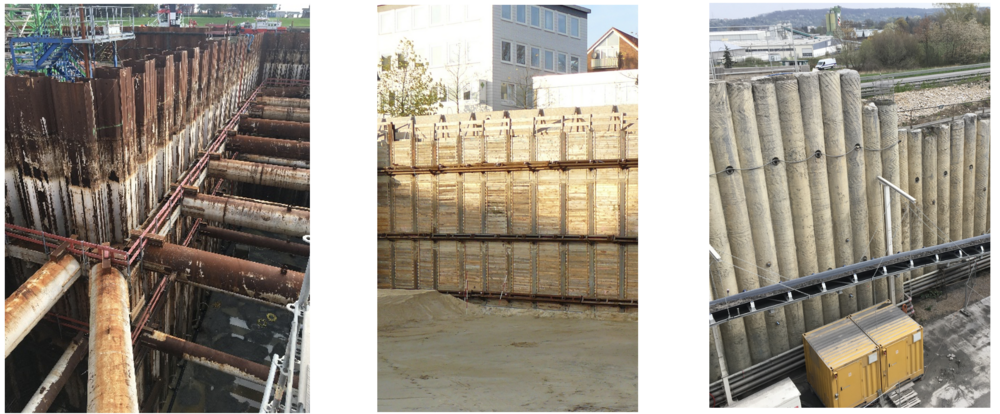
1.2 Static systems, resulting degree of fixity
The earth pressure distribution acting on retaining walls depends to a large extent on the static system which these walls form with any kind of supports (anchors, struts) and the embedment in the subsoil. The retaining wall must be embedded in the ground to a minimum depth in order to safely transfer the horizontal forces to be transferred into the subsoil.
If, in order to ensure equilibrium of the horizontal forces, the actual depth is selected to be equal to the calculated minimum depth, this is referred to as a “free earth support”. In this case, equilibrium can only be achieved by an additional support (strut, anchor) of the wall. As the embedment depth increases, the wall has a partially fixed earth support, which can be increased to a fully fixed earth support. This results in possible static systems:
- unsupported wall, fully fixed earth support
- single / multiple supported wall with free earth support
- single / multiple supported wall, fully fixed earth support
- single / multiple supported wall, partially fixed earth support
The following figure shows the calculated state variables moment, shear force and displacement due to the active earth pressure for a sheet pile wall supported at the top with a fully fixed earth support (degree of fixity = 100 %).
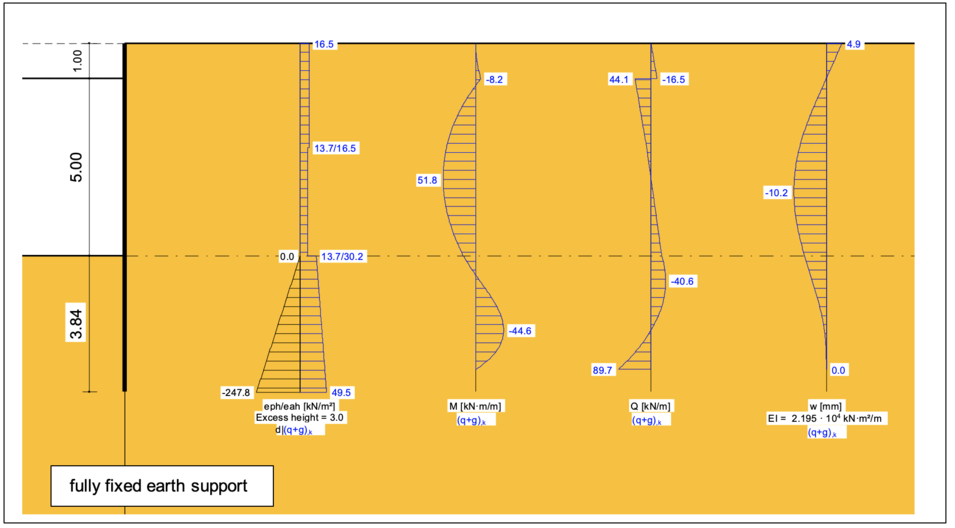
This is a statically indeterminate system in which both the bending moments and the deformations are smaller than in the case of a free earth support of the retaining wall.
For a partial degree of fixity of the earth support, the retaining wall must be rotated about a low-lying pivot point D. This pivot point is located slightly above the base of the wall. This results in deformations that are directed toward the earth side and mobilize a reverse passive earth pressure there.
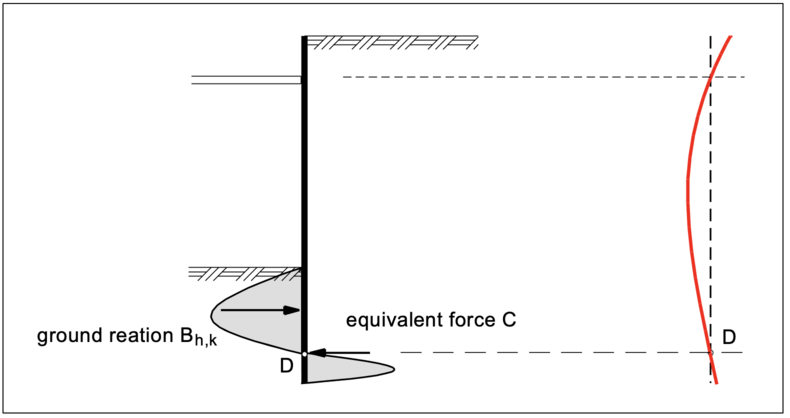
For a simplified calculation, the BLUM equivalent force C is applied to the theoretical pivot point, which replaces the passive earth pressure below the pivot point and additionally corrects the simplified assumed passive earth pressure on the excavation side. Together with the resultant of the passive earth pressure this equivalent force C forms a pair of forces that represents the fixing of the sheet pile footing.
In order to reduce the length of the retaining wall, the system can be calculated as a single/multiple supported retaining wall, but with a free earth support. The free support creates a statically determinate system with larger bending moments and deformations, but the retaining wall does not have to be embedded as deeply into the soil.
The following figure shows the results of a computation for the same retaining wall as shown above, but here with a free earth support (degree of restraint = 0 %). It can be seen clearly that - compared to the system considered above with the fully fixed earth support - the required embedment depth can be reduced significantly considering the same soil layers, properties and the same actions. Moments and deflections, however, become significantly larger.
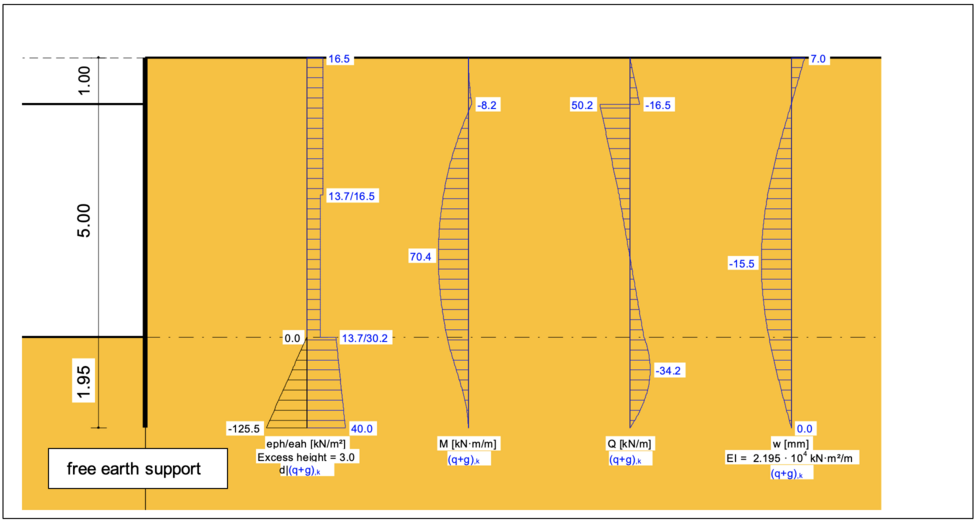
For a partially fixed earth support of a retaining wall, an embedment depth must be selected between that for a fully fixed earth support and the wall freely supported. For an exemplarily selected degree of fixity of 50 %, the following state variables result for the system considered above with the necessary embedment depth for this degree of fixity:
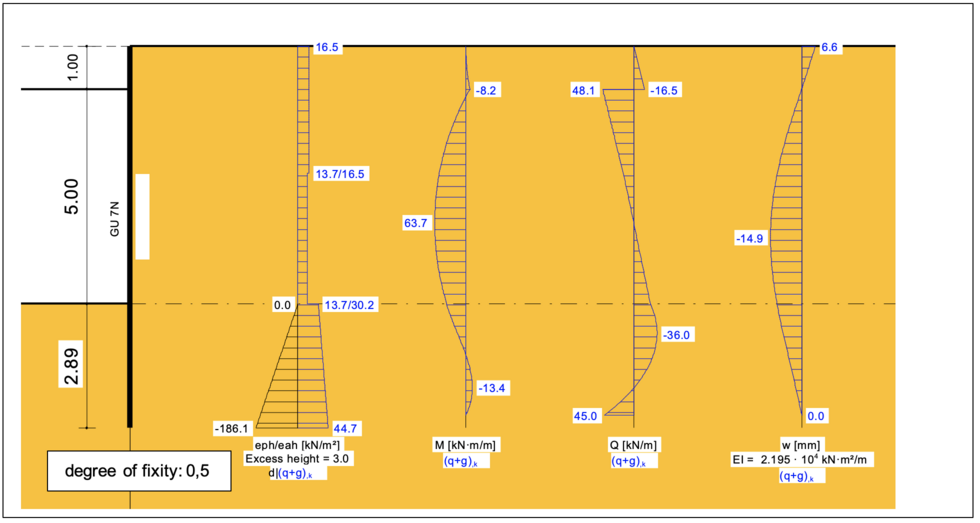
2. Analysis of retaining walls
For construction methods, necessary verifications and calculation examples for retaining wall types listed below, please refer to the corresponding entries in the Civilserve GmbH glossary.
- Calculation and design of soldier pile walls
- Calculation and design of sheet pile walls
- Calculation and design of bored pile walls
- Calculation and design of diaphragm walls
Further explanations on the topic of "Berliner Verbau" can be found here.
Do you want to get started directly with the design of retaining walls? Just one "mouse click" will take you to the license variants of the software solution: GGU-RETAIN.
3. Example of the use of the computer program GGU-RETAIN (incl. video)
The following video shows how the necessary verifications for the design situation DS-P for a sheet pile wall with different degrees of fixity of the earth support can be performed using the computer program GGU-RETAIN:
Notes on use
All texts, images and media listed here are subject to copyright and are the intellectual property of Civilserve GmbH. Use is only permitted with appropriate reference and a link to this source.